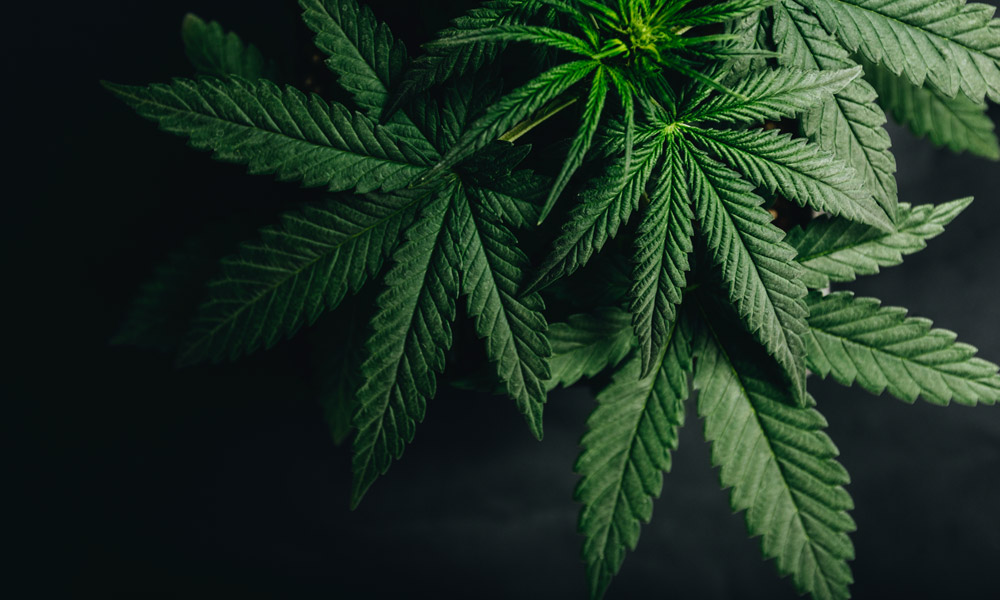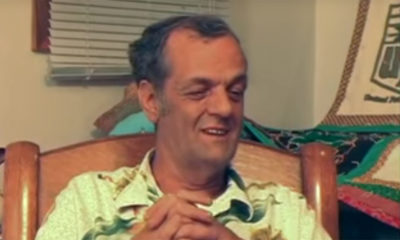
Legal
What You Should Know About the Cannabis Patent
The cannabis patent issued in 1999 to researchers working for the National Institutes of Health makes a viral splash every so often, but it’s widely misunderstood. Here’s what you need to know.
As befits an enormous entity that includes both Immigration and Customs Enforcement as well as the Library of Congress, the “federal government” is not a monolith — except for when “the government” is an evil character, looming like Freddie Krueger or distorted shadows in Plato’s cave in the poor minds of its citizens. A fine example of this theory in motion is US Patent 6,630,507, the “federal government’s patent on cannabis.”
First published in 1999, this patent application is for “cannabinoids as antioxidants and neuroprotectants,” and the filers were scientists working at the federal government’s National Institutes of Health. The fact that “the government” holds a patent on medical use of cannabis, while at the same time “the government” bans cannabis in all forms and (less so every day, but still a real possibility) sends armed agents of the state after grandmothers with joints, is usually interpreted in one of two ways: the government is a giant hypocrite, or the government is planning some nefarious power move to thwart legalization — and monopolize the commercial and medical powers of marijuana.
The 20-Year Itch
Like a cold sore, Patent 6,630,507 is mostly harmless but refuses to go away, and it seems to appear in the discourse every few years or so. The most recent round of outrage and rumor was triggered in late May, when viral content farm Uber Facts posted a Tweet about the patent that was later picked up by cannabis news aggregator Blacklist on Instagram.
The truth is far less harmless than rumors. Here’s all you need to know about the patent.
Old News
Federal patent law allows anyone to try to patent any “new and useful” technique, device or compound — and that includes stuff that’s illegal. In this context, “anyone” includes agents of the federal government, including researchers working on grants for the NIH, which also funds research at universities. Very notably, cannabis is very useful, but it’s not new; and since it’s an ancient plant used by humanity since the dawn of time, nobody alive can claim to have discovered it.
But this patent — which, if you read it, is limited to a “method of treating diseases…wherein the cannabinoid is nonpsychoactive” – doesn’t make your “weed plants copyright infringements,” as one poster put it on Instagram.
In fact, this patent doesn’t do much of anything. For starters, this patent — issued in 1999, and never renewed past an initial 20-year period, according to publicly available filings, which is when patents die unless they’re renewed — appears to be expired.
“On its face, US Patent No. 6,630,507 has been expired for a few years now,” said Larry Sandell, a patent attorney with Mei & Mark LLP and an expert on proprietary cannabis intellectual property. “As such, neither the government nor anyone else can sue for infringing its claims.”
What About CBD?
But even if it wasn’t, the patent is specific enough not to have much impact on either the adult-use or medical cannabis industries — including giants that have actually deployed cannabis-based medicines to the market like GW Pharmaceuticals. GW is the company behind medicines based on the non-psychoactive cannabinoid CBD, Epidiolex. GW was recently acquired by Jazz Pharmaceutials in a blockbuster deal. And this patent didn’t seem to have much impact on that.
The NIH did not immediately respond to inquiries from Cannabis Now, but in the past, the NIH has explained that it pursued the patent so that discoveries that might benefit the public don’t sit idle.
In this case, NIH researchers “discovered that non-psychoactive compounds in cannabis may potentially have antioxidant properties that could be beneficial in the treatment of certain neurological diseases,” as agency spokeswoman Renate Myles told The Cannabist back in 2016.
Crucially, as Myles explained, the patent was only for “cannabinoid chemical compounds structurally similar to THC”— and “not for the whole marijuana plant,” she told the website.
But just because you have a patent doesn’t mean you have anything beyond a patent — and the patent itself may have no value. This appears to be the case here.
Exclusive Wrongs
Kannalife, a company based in Pennsylvania, claimed in 2012 to have acquired an “exclusive license” to develop a pharmaceutical treatment based on the patented technology to treat chronic traumatic encephalopathy, or CTE, the disease found in professional athletes with repeated head trauma.
Kannalife did not respond to a request for comment, but it is unclear what value the patent offered Kannalife, which recently rebranded to Neuropathix. The company, which says it licensed the patent between 2012 and 2019, later introduced a patented molecule to be used in a treatment referred to as “super CBD.” The takeaway is that the government patent didn’t seem to do Kannalife any favors.
For all the hype around CBD, CBD is not a particularly powerful drug. Recent research suggests that for fast relief from afflictions like nausea, THC is much more effective. And THC was not included in the government’s application.
Okay, so why bother? Since the NIH did not respond to requests for comments from Cannabis Now, we’re left with informed speculation. But even guesswork provides a few clues — and they’re all very boring.
Researchers love to register accomplishments, be it a patent application or a published article. A patent application looks nice on a scientist’s resume, regardless of whether it goes anywhere.
In this case, the government is the ultimate “owner” of the patented technology, since the government funded the research via the NIH. The researchers may simply have wanted to show that they did something with the money and lab time — and what they found wasn’t that revolutionary, considering the ongoing CBD research in Israel in the 1990s.
“When the government pays for the research, it owns any patents that are issued from that research,” said Michael Backes, an author and cannabis researcher (who is also the applicant on a patent for cannabis DNA technology). “The subject of a patent is not required to be federally legal, unlike US trademarks. The only reason there is a fuss is because the fussy don’t know the law.”
About the most valuable takeaway from the never-ending outrage over Patent 6,630,507 is that the Controlled Substances Act — which declares marijuana a dangerous drug with no medical value — is a scientifically unsound and outmoded law that contradicts itself and is designed to do little more than help authorities punish its political opponents.
And you don’t need a Clinton Administration-era patent application that expired before the coronavirus pandemic to tell you federal law is long past due for an update.
























